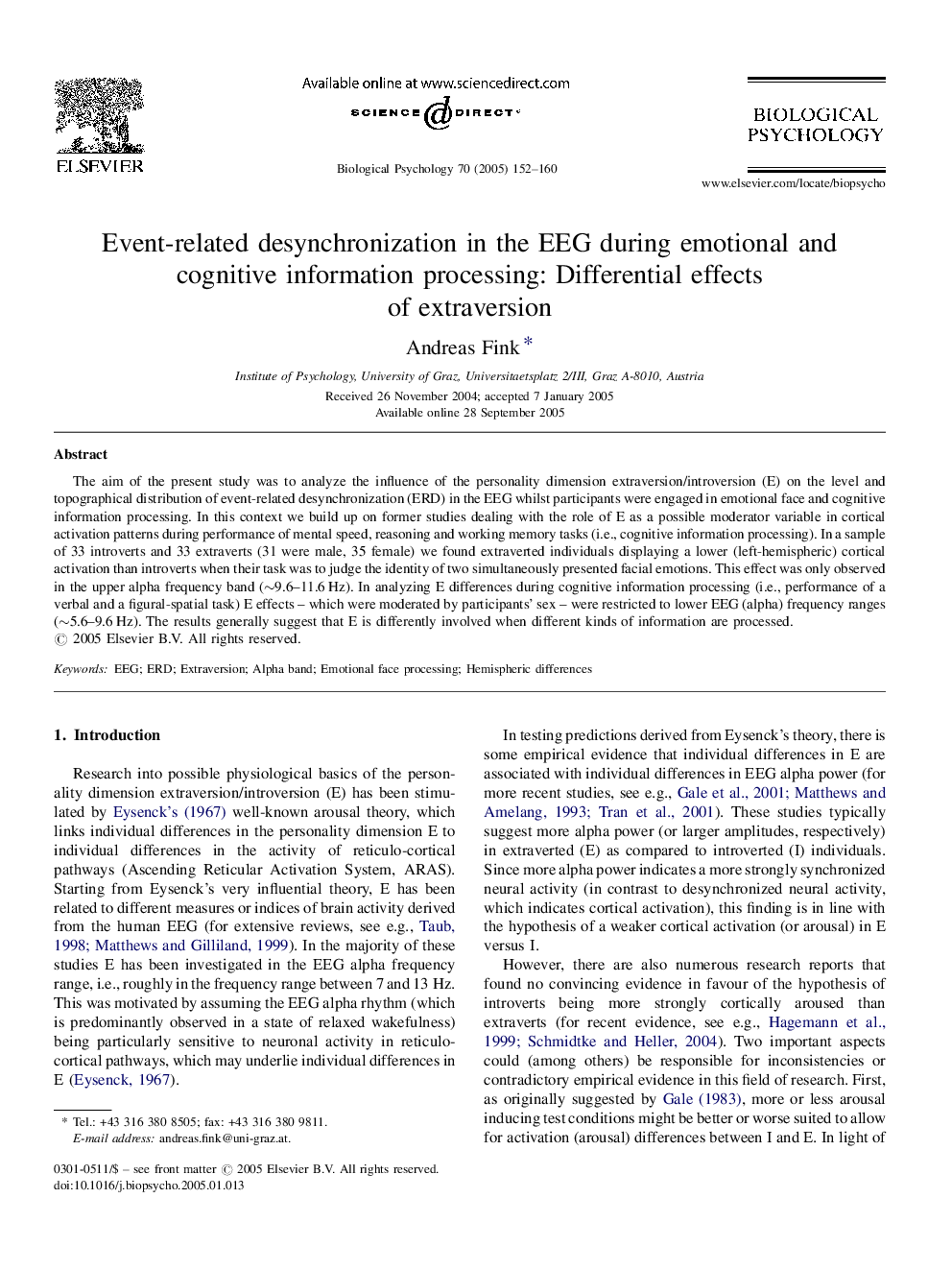| Article ID | Journal | Published Year | Pages | File Type |
|---|---|---|---|---|
| 9722041 | Biological Psychology | 2005 | 9 Pages |
Abstract
The aim of the present study was to analyze the influence of the personality dimension extraversion/introversion (E) on the level and topographical distribution of event-related desynchronization (ERD) in the EEG whilst participants were engaged in emotional face and cognitive information processing. In this context we build up on former studies dealing with the role of E as a possible moderator variable in cortical activation patterns during performance of mental speed, reasoning and working memory tasks (i.e., cognitive information processing). In a sample of 33 introverts and 33 extraverts (31 were male, 35 female) we found extraverted individuals displaying a lower (left-hemispheric) cortical activation than introverts when their task was to judge the identity of two simultaneously presented facial emotions. This effect was only observed in the upper alpha frequency band (â¼9.6-11.6Â Hz). In analyzing E differences during cognitive information processing (i.e., performance of a verbal and a figural-spatial task) E effects - which were moderated by participants' sex - were restricted to lower EEG (alpha) frequency ranges (â¼5.6-9.6Â Hz). The results generally suggest that E is differently involved when different kinds of information are processed.
Related Topics
Life Sciences
Neuroscience
Behavioral Neuroscience
Authors
Andreas Fink,
